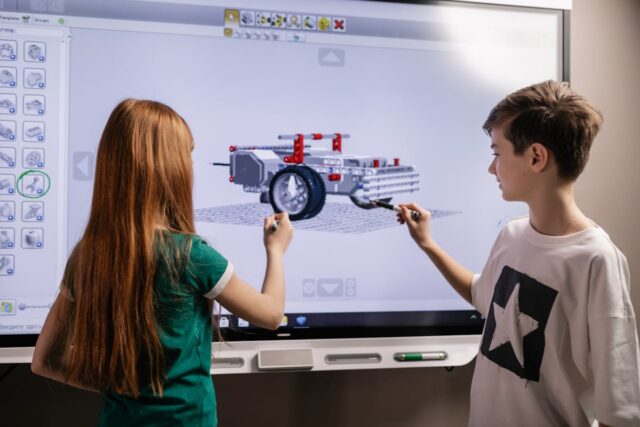Java is one of the most versatile programming languages. It’s widely used in robotics for its flexibility and cross-platform compatibility. If you’re wondering how to start your journey, this guide will help you learn Java for robotics effectively.
Why Learn Java for Robotics?
Java’s popularity in robotics stems from its robust features. The language supports object-oriented programming (OOP), making it ideal for modeling robot systems. It’s also platform-independent, meaning you can write code once and run it anywhere.
Benefits of Java in Robotics Programming
- Cross-platform compatibility: Write code that works on various operating systems.
- Rich libraries: Access frameworks like Lajo’s and JOAL to simplify complex robotics tasks.
- Real-time performance: Java’s Just-In-Time (JIT) compiler ensures efficient execution of robotics algorithms.
Java vs Python: Which Is Better for Robotics?
While Python is beginner-friendly, Java offers real-time performance and better scalability for large robotics projects. If you’re building an autonomous robot or working on industrial robotics, Java is often the better choice.
| Feature | Java | Python |
| Performance | High (with JIT) | Moderate |
| Ease of Learning | Moderate | Easy |
| Libraries for Robotics | Many available | Extensive |
| Application | Industrial robotics | Prototyping |
Step-by-Step Guide to Learning Java for Robotics
Step 1: Understand the Basics of Java
Start by learning object-oriented programming (OOP) concepts. Java is built around OOP principles, which help you design modular and reusable code. Install a development environment like Eclipse or IntelliJ IDEA to begin coding.
What Is Object-Oriented Programming (OOP)?
OOP allows you to organize code into classes and objects. This is particularly useful in robotics, where each component (e.g., motors, sensors) can be treated as an object.
Setting Up a Java Development Environment
- Download and install the Java Development Kit (JDK).
- Choose an Integrated Development Environment (IDE) like NetBeans or Eclipse.
- Write and execute your first Java program to verify the setup.
Step 2: Explore Robotics-Specific Java Libraries
Robotics development becomes easier with specialized libraries. Some popular libraries include:
- Lajo’s: A library for programming Lego Mindstorms robots.
- JOAL (Java OpenAL): Useful for sound and robotics simulations.
- Robot Operating System (ROS) with Java bindings.
Top Java Robotics Libraries to Get Started
Start with Lajo’s for basic projects. Progress to libraries like DJL for machine learning in robotics.
Open-Source Robotics Tools Compatible with Java
Open-source tools such as Gazebo and OpenCV offer excellent support for Java developers. These tools are helpful for robotics simulation and computer vision tasks.
Step 3: Build Hands-On Robotics Projects
Practical projects are the best way to learn. Start small and gradually increase complexity.
Simple Java Projects for Beginners in Robotics
- A line-following robot using sensors.
- A robotic arm controlled via Java GUI.
- A voice-controlled robot using Java Sound API.
Using Java Algorithms for Robot Control
Learn algorithms like PID control, pathfinding, and sensor fusion. Implementing these algorithms in Java will deepen your understanding of robotics programming.
Java Frameworks and Tools for Robotics Development
Integrating Java with Robot Operating System (ROS)
ROS is a popular framework for robotics. Use Ros java, the official Java library for ROS, to integrate Java into robotic systems. This allows seamless communication between software and hardware.
Robotics Simulation Tools to Practice Java Programming
Simulation tools like Gazebo and Webots let you test your Java programs in a virtual environment. This is a cost-effective way to practice without physical hardware.
Best Practices for Java Robotics Programming
How to Write Clean Java Code for Robotics
- Use descriptive class and method names.
- Write modular code for easy debugging.
- Follow standard Java naming conventions.
Optimizing Java for Embedded Systems in Robotics
Robotics often involves embedded systems. Optimize your code by:
- Minimizing memory usage.
- Using efficient algorithms.
- Testing on actual hardware to identify bottlenecks.
Top Resources to Learn Java for Robotics
Online Courses and Tutorials
Platforms like Coursera and Udemy offer courses tailored for Java robotics. Look for courses that include practical projects and simulations.
Books and Documentation for Java Robotics
- “Java Programming for Robotics” – A comprehensive guide for beginners.
- “Robotics with Java” – Covers advanced topics like AI integration.
- Official documentation for Java libraries like Lajo’s and Rojava.
Conclusion: Start Learning Java for Robotics Today
Learning how to learn Java for robotics can open doors to exciting opportunities. With its robust libraries and frameworks, Java is a powerful tool for creating intelligent robots. Start small, explore projects, and practice consistently to master this skill.
Frequently Asked Questions
- Can I learn Java for robotics without prior coding experience? Yes, but it’s recommended to start with Java basics and gradually move to robotics-specific applications.
- What are the best libraries for robotics programming in Java? Libraries like Lajo’s, Ros java, and JOAL are excellent for robotics development.
- How does Java compare to Python in robotics programming? Java offers better performance and scalability, making it suitable for industrial robotics. Python, on the other hand, is ideal for rapid prototyping.
- Do I need hardware to practice Java robotics programming? No. You can use simulation tools like Gazebo or Webots to practice without hardware.























